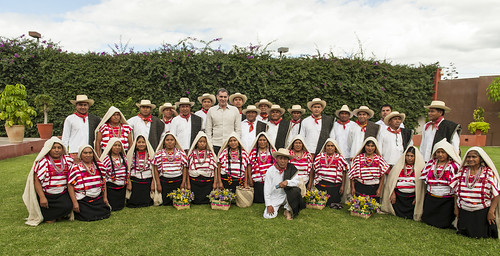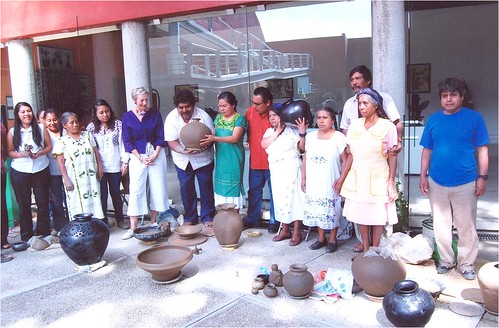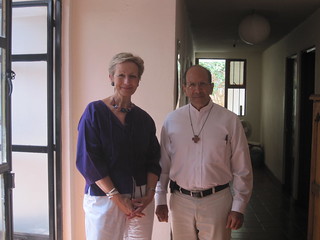7th August 2012
A weekend in Oaxaca
I usually do all I can to avoid hordes of tourists, but last weekend I jumped at the chance to join them. And I’m glad I did! The opportunity to watch the 80th anniversary of the Guelaguetza – an indigenous cultural festival in Oaxaca a Southern State of Mexico – at the invitation of its Governor Gabino Cue was just too good to miss.
The mesmerising ballet of the death of Princess Donahi and the life and death struggle of the Zapotecas and Mixtecas centuries ago (shown to some 10,000 people at a time) was fantastic. It’s clear that the richness of the Zapotecs, Mixtecs, and the fourteen other ethnic groups are still very present in Oaxaca’s culture. The continuing strength of some of Mexico’s fifty-two indigenous languages was also very clear as all the dances and rituals were presented by native speaker after speaker.

But there was far more besides the Guelaguetza. Deepening relationships through conversations with the Governor and his team was an important part of the trip. I picked up some useful insight into Oaxaca plans to expand its Tourism Industry: including mature plans for UK Tour Companies. I learnt of the State’s plans to develop its education and skills sectors- areas where the UK wants to expand its footprint in Mexico. I met officials involved in our ongoing Embassy project with Oaxaca to form an Action Plan to handle Climate Change in their state.
I also met Padre Solalinde (co-ordinator of a migrant’s shelter in Ixtepec) and held a round table with Human Rights Defenders. I was able to get an ‘on the ground’ sense of the important work they do to promote human rights for Mexicans and migrants, and the challenges they face in taking on impunity and corruption as well as ideas for taking forward our projects to strengthen freedom of expression in Mexico.
A final highlight was a visit to San Bartolo Coyotepec, one of the famous villages in Oaxaca producing black clay pots. These beautiful items are sculpted by hand, and unique to Oaxaca. I was lucky enough to see a demonstration of this craft and had opportunities to buy a number of fine pieces.
The challenge for the villages is how to maintain this tradition and sell more, including abroad. No easy answers but getting more European tourists to these timeless and creative cities is a good start- for all of us.


